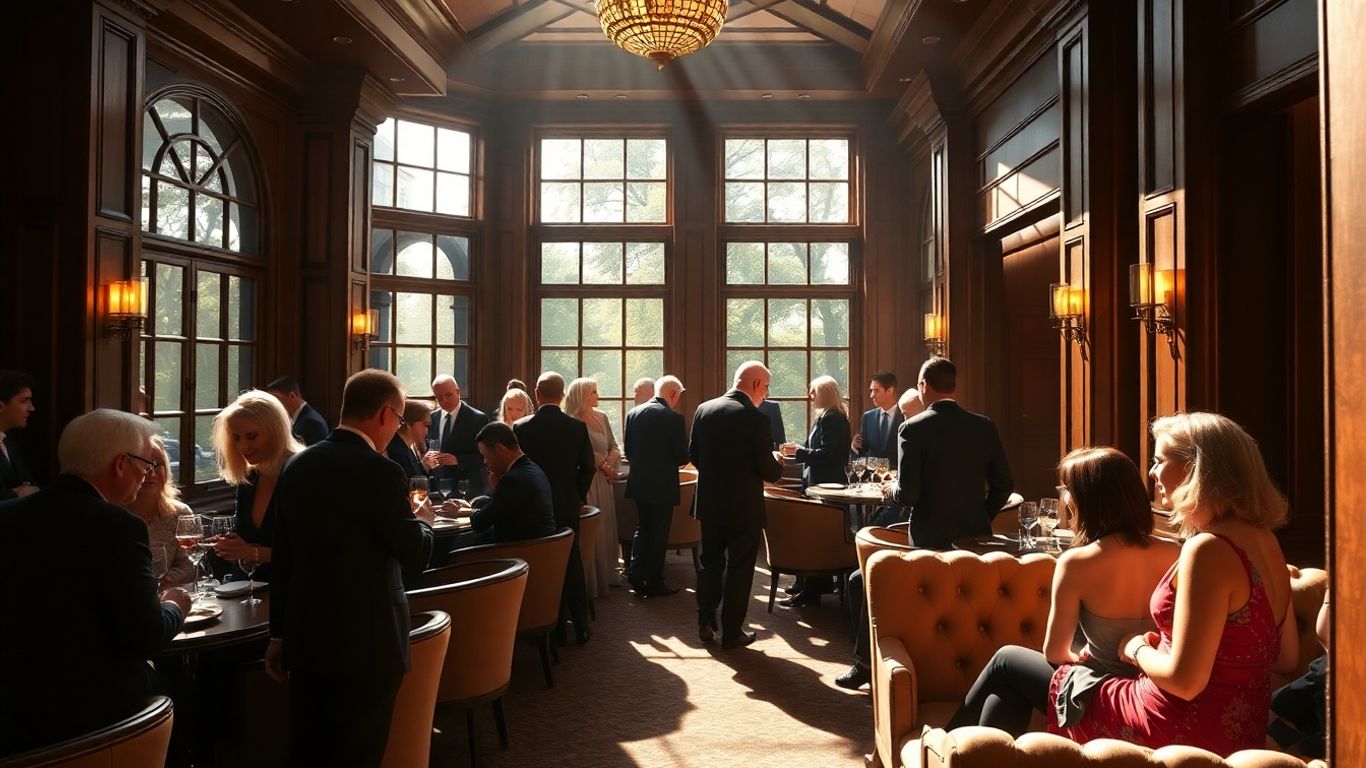The New York Times recently explored the booming members-only club scene in New York City, examining how clubs like Casa Cipriani and Zero Bond have risen in popularity by filling voids left by the pandemic. These clubs cater to individuals seeking exclusive environments outside the home and office. The New York Times recently discussed this phenomenon, highlighting both opportunities and challenges that other club owners should consider.
In this editorial, we analyze some of the article’s observations and cautionary points for private club owners nationwide, including those aiming to create spaces for meaningful connection and community.
Filling Social Voids: A New Take on the “Third Place”
As The New York Times article explains, private clubs are increasingly becoming “third places” for New Yorkers who, due to remote work and changing social habits, need gathering spaces outside home and work. With nearly 98 million square feet of available office space in Manhattan, New York City landlords are opening up opportunities for private clubs to occupy spaces that previously catered to office tenants. This commercial real estate shift, combined with a renewed demand for social spaces, has sparked the rise of new private clubs.
The “third place” concept is about cultivating an environment where members can unwind and socialize, capturing that middle ground between the pressures of home and the formalities of work. But true third places need more than exclusivity to succeed. Members don’t join private social clubs just for a beautiful room or status. They’re looking for a community. People are seeking places that offer a sense of connection, albeit with the added allure of luxury amenities.
However, private clubs must avoid overly commercializing their third-place environments. Clubs like Remedy Place, where members can “take Zoom calls from hyperbaric oxygen chambers,” illustrate how extravagance can sometimes overshadow the community element. It’s essential to keep the human element front and center, providing members with more than just a luxurious backdrop.

Exclusivity at a Cost: The Transactional Nature of New York’s New Clubs and Lessons Other Clubs Can Learn
The article highlights the hefty price tags attached to memberships at clubs like Casa Cruz and Aman New York, where initiation fees can reach $200,000 or higher. This exclusivity isn’t just about luxury amenities but reinforces a certain “members-only” status that feels transactional. According to the article, clubs are using elaborate membership criteria and “vibe checks” to select members, making the process feel more like a purchase of status than an entry into a community.
Exclusivity is a significant draw for private clubs but warns that a highly transactional approach can alienate members. People want to feel like they’re part of something meaningful, not just buying into a luxury service. Clubs that can foster a culture that feels intimate and purpose-driven, even though it is a selective club, are most likely to have staying power. It’s not easy to create spaces that are both exclusive and welcoming, a fact some New York clubs described by The New York Times are realizing, where exclusivity risks overshadowing the club’s communal value.
Temporary Spaces and Long-Term Concerns
One interesting point the article raises is the potential instability of these newer clubs, many of which are on leases rather than owning their locations. This lack of real estate ownership may limit their staying power, as these clubs are more vulnerable to shifts in the real estate market and economic downturns.
This highlights the fundamental difference between many of the newly founded clubs and more traditional, established clubs. A club that lasts isn’t just about today’s trends. It’s about creating a space that people will want to be a part of for years to come. Some newer clubs are already facing challenges with financial sustainability, reminding private club owners that a solid foundation and consistent brand can outlast temporary popularity.
Overcrowding and Authenticity: The Soho House Effect
It’s no secret that Soho House is one of the pioneers of the modern members-only club. However, due to overcrowding, it recently halted new memberships in several cities. The exclusivity that Soho House has built over the years contributed to its cachet, but its rapid growth has led to an experience that some members find diluted.
Overcrowding is a cautionary tale for all club owners. Some clubs approach this by maintaining a cap on membership to avoid losing the intimacy and high-quality experience that members expect. A club becomes less special when it’s overcrowded. True exclusivity is about more than price points — it’s about curating an experience where members feel genuinely valued. For private club owners, the Soho House challenges serve as a reminder that rapid growth can come at the cost of member satisfaction.
The Private Club as a Business Model: Navigating Modern Challenges
Private clubs today are businesses, balancing profitability with members’ desires for connection and community. However, this model can sometimes clash with the very nature of what members seek in a social space. As the article illustrates through the example of a club member feeling her experience was “transactional,” there is a risk that clubs become more focused on upselling services than fostering genuine connections.
The most successful clubs operate with a focus on community rather than just profit. If members feel like they’re constantly being sold to, the club loses its soul. Financial viability should support, rather than overshadow, the member experience. Private club owners are facing a balancing act, navigating how to avoid becoming just another upscale business.

Third Places or Exclusive Spaces? The Future of Private Clubs
The article concludes by questioning the staying power of these trendy new clubs. As it notes, some clubs, like the women-only Wing, have already shuttered due to a lack of stability. Private clubs will endure, but only if they stay true to their purpose as community spaces rather than luxury offerings.
Reflecting on the concept of the “third place,” private clubs can succeed as meaningful gathering spots if they focus on community over mere exclusivity. They must create an experience where people feel genuinely at home, avoiding the overly curated, commercialized environment seen in many New York clubs. While exclusivity is part of the appeal, it shouldn’t override the authentic connections that make clubs valuable to their members.
Ultimately, there has been a shift in the private club scene: while these spaces are filling a social void, their reliance on high fees and exclusivity can make them feel less like traditional third places and more like luxury commodities. By staying rooted in community and authenticity, clubs can strike a balance between modern appeal and timeless connection.
Final Takeaways for Private Club Owners
The New York Times article paints a picture of an evolving private club landscape, one that offers valuable lessons for club owners everywhere. From managing exclusivity and avoiding overcrowding to balancing financial sustainability with genuine member experiences, these new clubs in New York serve as both inspirations and warnings. For private social clubs striving to avoid common pitfalls, the mission remains clear: create a space that members cherish not just as an escape from home and work but as a genuine community where they feel they truly belong.
By keeping an eye on these pitfalls and successes, private club owners can build a brand that endures, prioritizing meaningful connections over fleeting luxury. In doing so, they can ensure their clubs remain relevant and cherished, even as trends and market conditions change.


